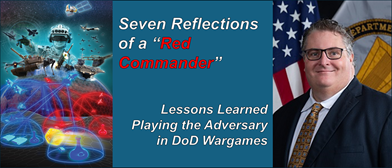“… a Red Commander needs to convince Blue that the Red Team is more than a mere sparring partner, but a broader partner in learning and thinking about what could happen in a potential conflict.”
[Editor’s Note: Army Mad Scientist continues our series of blog posts and podcasts in the run up to our Game On! Wargaming & The Operational Environment Conference, co-hosted with the Georgetown University Wargaming Society, on 6-7 November 2024 — while reservations to attend this event are now closed, you may still participate virtually — information on the conference’s Zoom.Gov link may be found at the end of this post (below).
Army Mad Scientist welcomes back frequent contributor Ian Sullivan, Deputy Chief of Staff Intelligence, TRADOC G-2, with an excerpt from his timely and insightful article, originally published by our colleagues at Military Review — you can read the comprehensive piece here. As Mr. Sullivan sagely observes:
“Wargames should be about Blue’s learning, not Red’s. However, one of the main benefits for Red in these events is that we learn, too. In fact, because we often get way more “reps and sets” playing through countless permutations of possible regional conflicts when compared to our Blue counterparts, our learning may actually be more acute. Red players end up becoming very knowledgeable and thoughtful on a range of issues, many of which relate to Blue as much as they do Red. We end up thinking a great deal about what warfare between peer competitors would look like. I like to tell my Red Team players that we should be able to close our eyes and visualize the conflict unfold over time and space, which allows us to understand what key events will need to occur over what key pieces of terrain and in what timeframes. Because we fight these wars time and again, we develop a unique understanding of both Red and Blue, their strengths and weaknesses, the vulnerabilities they present and the opportunities they may be able to exploit.”
In today’s post, we excerpt the seven lessons Mr. Sullivan has learned from playing Red — “Over the past five years, I have played in 12 separate wargames for the Army, the Navy, Combatant Commands, and the Joint Staff; in nine of them, I was the Red Commander. This means that I led the enemy effort, supported by teams of experts from both military and civilian intelligence agencies. ” Read on to glean his foundational insights on what wargaming Red can tell us!]
Lesson 1: Everything starts with understanding the enemy. Simple, right? But it’s not as simple as you would think. The Army and the Joint Force are massive machines, and sometimes the process of doing becomes inexorable. This can mean that the mechanisms simply move without reflection or thought—never truly internalizing an understanding of the adversary, who always gets a vote. The threat must not be allowed to get lost in this machine. It must be front and center to everything the Army does. It must not only drive operations, but also integration of doctrine, organization, training, materiel, leadership and education, personnel, facilities, and policy (DOTMLPF-P). Furthermore, the National Defense Strategy calls on the U.S. Joint Force to be “threat based,” focusing on our pacing, acute, and persistent threats. If we do not base what we intend to do in a conflict against a peer competitor on an understanding of that peer competitor, then we will be at a  massive disadvantage in a conflict. A working knowledge of the adversary is our best hedge against a failure of imagination. This notion is at the core of U.S. Army Training and Doctrine Command’s latest Operational Environment Assessment, which states plainly, “to achieve victory, the U.S. Army must know the enemy.”1 We need experts with a deep understanding of the adversary, but we also need those who will devise war plans and then execute them to maintain a strong working knowledge of Red. This was standard Army procedure during the Cold War, but in the years following, it became a lost art. Wargaming can help restore that art. For example, in its after-action report for the UNIFIED PACIFIC 22 wargame, U.S. Army Pacific’s first highlighted insight was the requirement to address two key advantages held by the Chinese People’s Liberation Army (PLA)—mass and interior lines.2 This key conclusion from UNIFIED PACIFIC 22 demonstrates how wargaming specifically can help war planners and operators learn about the adversary and then develop an understanding of the challenges it would need to overcome in an actual conflict.
massive disadvantage in a conflict. A working knowledge of the adversary is our best hedge against a failure of imagination. This notion is at the core of U.S. Army Training and Doctrine Command’s latest Operational Environment Assessment, which states plainly, “to achieve victory, the U.S. Army must know the enemy.”1 We need experts with a deep understanding of the adversary, but we also need those who will devise war plans and then execute them to maintain a strong working knowledge of Red. This was standard Army procedure during the Cold War, but in the years following, it became a lost art. Wargaming can help restore that art. For example, in its after-action report for the UNIFIED PACIFIC 22 wargame, U.S. Army Pacific’s first highlighted insight was the requirement to address two key advantages held by the Chinese People’s Liberation Army (PLA)—mass and interior lines.2 This key conclusion from UNIFIED PACIFIC 22 demonstrates how wargaming specifically can help war planners and operators learn about the adversary and then develop an understanding of the challenges it would need to overcome in an actual conflict.
Lesson 2: Warfare Remains a Human Endeavor. Wargames spend a great deal of time, effort, and focus on capabilities, both Red and Blue. Indeed, wargaming provides a unique laboratory to see how critical capabilities—such as hypersonic missiles; unmanned systems; counterspace weapons; new and visionary intelligence, surveillance, and reconnaissance capabilities; or counter-unmanned aerial systems—fit into a conflict. But it is not the performance of these systems that are central to these games. It is the human factor; namely how these pieces are put together and employed by people, the strategies they adopt, and how they react to the unexpected that truly makes wargaming unique. The Center for Army Analysis, the Army’s leading provider of wargames, notes that wargaming highlights the “complex, subjective, and sometimes illogical and irrational decision of humans.”3 One of the most telling examples of this comes from the Cold War — Exercise Ivy League ’82. The game simulated a rapid Soviet nuclear attack on the United States and gave the U.S. NCA mere minutes to react. The game was played twice; once with a stand-in president, and once with President Ronald Reagan playing his role as commander-in-chief. The game essentially demonstrated the human nature of existential conflict. It demonstrated that panic or emotion could very well be real and palpable, and that the best laid plans are  hostage to human actions. One issue that came up in Ivy League ’82, for example, was that President Reagan refused to board the National Emergency Airborne Command Post when a notional Soviet nuclear strike was inbound. He wanted to manage the crisis from the White House and not in the skies aboard the “Kneecap,” thereby placing himself at grave risk and overturning the best laid continuity of government plans. Another issue was that the Commanders-in-Chief of the Air Force Strategic Air Command, the European Command, and the Pacific Command were designated under the terms of the Single Integrated Operational Plan as having nuclear release authority pre-delegated to them. Their job was to carry out nuclear strikes after confirming that an attack was underway. They were instructed to respond when the first missile detonated on U.S. soil. How they would react in actual crisis, with the tensions surrounding nuclear release, was completely unknowable.4 Wargaming at least brought these issues to the forefront and made senior leaders confront them. The same is true in the games we play today. The human elements of the game are brought to bear, and although the stresses certainly are not the same as actual conflict, the intellectual exercise at least compels thinking through the vagaries of human behavior.
hostage to human actions. One issue that came up in Ivy League ’82, for example, was that President Reagan refused to board the National Emergency Airborne Command Post when a notional Soviet nuclear strike was inbound. He wanted to manage the crisis from the White House and not in the skies aboard the “Kneecap,” thereby placing himself at grave risk and overturning the best laid continuity of government plans. Another issue was that the Commanders-in-Chief of the Air Force Strategic Air Command, the European Command, and the Pacific Command were designated under the terms of the Single Integrated Operational Plan as having nuclear release authority pre-delegated to them. Their job was to carry out nuclear strikes after confirming that an attack was underway. They were instructed to respond when the first missile detonated on U.S. soil. How they would react in actual crisis, with the tensions surrounding nuclear release, was completely unknowable.4 Wargaming at least brought these issues to the forefront and made senior leaders confront them. The same is true in the games we play today. The human elements of the game are brought to bear, and although the stresses certainly are not the same as actual conflict, the intellectual exercise at least compels thinking through the vagaries of human behavior.
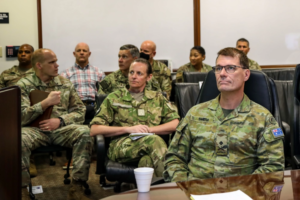
Lesson 3: Great Power Warfare Is Joint, Combined, Interagency, and Whole-of-Nation… Our Wargames Should Be, Too. It is becoming rapidly apparent that competition, crisis, and conflict between Great Powers and peer competitors will be Joint, Combined, Interagency, and Whole-of-Nation. The DoD wargaming community has started to understand this and does everything that it can to invite experts from outside their typical echo chamber to participate in a game. This is important, as it shows DoD that it is but part of a broader nation that would be engaged in a conflict. It shows that other entities, be it an intelligence agency, an Ally, or perhaps even a private industry entity, might have an ability to help solve a military problem. It also means that even though most wargames are led by DoD, military leaders must understand that they will not make many of the critical strategic calls during the run-up to a crisis or conflict. I recently played in a game where a senior political appointee from within DoD played the NCA for a game in which the United States was engaged in a conflict with a nuclear-armed, peer competitor. The Blue Team, in responding to Red aggression, wished to quickly target and destroy a number of Red assets and installations. They were nonplussed to learn that the authorities for their desired strike were withheld as the NCA thought through his decision. During the hotwash, when Blue planners brought the delay up, the individual playing the NCA told them that he was being asked to make the most consequential decision any U.S. President would ever have to make—to initiate combat operations against a nuclear-armed enemy who had the capability to cause critical damage to the United States. He then, tongue-in-cheek, asked them to forgive him for taking some extra time to contemplate such a momentous call. This is an extreme example, but wargaming needs to incorporate not only the capabilities, but the decision-making processes of a range of actors, both across the U.S. government and among our Allies and partners. Getting experts from across this spectrum to participate in wargames will become increasingly essential.
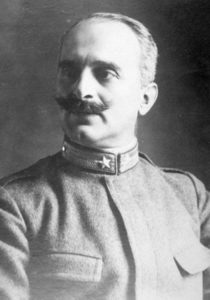
Lesson 4: Warfare Will Be Multidomain, and Wargames Allow Us to Master Multidomain Skillsets. What makes contemporary and near-future warfare so different when compared to what we have experienced since the end of the Cold War is that our key potential adversaries can match the U.S. Joint Force and its Allies across all domains. They can converge capabilities, deny us the ability to operate in certain domains, and then achieve their campaign objectives if they play their cards right. In wargames, Red players generally have more experience and practice at employing multidomain capabilities than the typical Blue players, often providing a wake-up call to the Blue Team. Our pacing threat is designing a force capable of operating and converging across domains, with capabilities and an approach to war that denies Blue the ability to maneuver or operate jointly across warfare domains.5 If handled well in a wargame, Red can prevail. Conversely, Blue must use wargames as an ability to test its own multidomain theories. Wargames offer a unique venue where the services can see how things come together in the Joint fight. The Italian airpower theorist Giulio Douhet noted “there are experts of land, sea, and air warfare. Yet there are no experts of warfare. And warfare is a single entity, having a common purpose.” Wargaming can help develop those experts,6 and particularly, develop the multidomain skills, knowledge, and understanding that the Joint Force will require to take on an adversary who also can operate across domains.
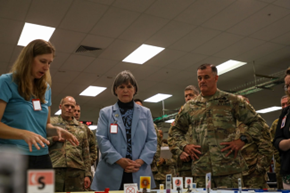
Lesson 5: The Army Likes to Live in the Tactical World; Great Power Warfare Is Won and Lost at the Operational Level. The era of counterinsurgency shifted the Army’s focus to the tactical level. After the initial invasion of Iraq in 2003, the Army changed its unit of action to the brigade level, and most of the fighting in both Iraq and Afghanistan was done at the battalion and company level. The whole Army structure of that era—how we trained, how we thought about warfare, and how we organized—focused on the tactical fight. Wargaming against peer competitors, however, is demonstrating that such conflicts likely will be won or lost at the operational level, and that operational art is a skillset that must be understood throughout the Joint Force. If the tactical level focuses on battles, engagements, and small-unit actions, it is the operational level that will provide the critical linkages in terms of campaigns and major operations that ensure tactical success eventually translates to the strategic level, where theater strategy and national policy reside.7 It is the operational art that allows the commander to translate strategic level goals into tasks that subordinates can accomplish.8 An example of this can be found in UNIFIED PACIFIC 23, which focused on contested logistics. The game’s final report notes the criticality of improving Joint Combined Command and Control. For sustainment, the necessity to maximize operational-level, intra-theater movement is then controlled by U.S. Indo-Pacific Command’s emerging Pacific Deployment and Distribution Operations Center, which takes in requirements from service components and then issues orders to subordinate commands to execute. The Army’s 8th Theater Sustainment Command then evaluated best practices and techniques to carry out sustainment down to the tactical formations in the fight.9 These types of issues routinely dominate wargaming, and they clearly are operational rather than tactical. This vignette demonstrates how the practicing of operational art is a crucial advantage of wargaming.
Lesson 6: Wargaming “Reps and Sets” Guard Against Strategic Surprise and Failure of Imagination. Red experts spend most of their time thinking about our adversaries and what conflict with them could entail, and most have played Red in many wargames. The next game is not summary learning for Red—it is just another permutation of a fight that they’ve fought numerous other times. Blue generally does not get the luxury to do this in the daily press of normal operations, and when the Blue Team assembles for a war game, it likely is the first time many of them have confronted the operationalizing of their war plans. Armies and Soldiers often learn best through experience of battle, and wargaming is one of the best ways to at least approximate some of the challenges that could be faced when a conflict begins. In his excellent work on wargaming the unfought battles of the Cold War, Jim Storr notes “things that might be blindingly obvious to someone who gamed dozens of battles might well be nonsensical or, at best, counterintuitive to commanders who served for years but never fought [them].”10 Having the opportunity to fight the fights that could occur means that leaders will have the opportunity to confront the challenges that they might encounter, and not be faced with surprise or suffer a failure of imagination.
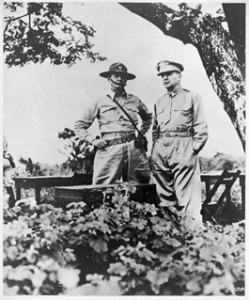
A pertinent historical example involves GEN Douglas MacArthur during the Japanese invasion of the Philippines in 1941. Throughout the interwar years, U.S. defense planners struggled with the notion of how to defend the Philippines from a potential Japanese assault. The result was the well-known War Plan Orange (WPO), which understood, even before the attack on Pearl Harbor, the difficulties that the United States would have in reinforcing the Philippines across the expanse of the Pacific and in the face of Japanese air and maritime power. WPO-3, the variant in effect in 1941, called for the U.S. forces in the Philippines to withdraw to the defensible Bataan Peninsula on Luzon, where, with prepositioned sustainment stocks in place, they would hold as long as possible to give forces marshalling on the U.S. West Coast and Hawaii time to defeat the Japanese Navy and relieve the defenders. Despite the years of work in devising WPO—and countless wargames supporting it— MacArthur on the eve of the actual Japanese attack completely revised the plan. Instead of consolidating on the defense on favorable terrain, he would attempt to defeat the Japanese on the beaches of Luzon wherever they landed. When the Japanese landed, MacArthur’s forces were completely out of position and out of time.11 In this case, MacArthur disregarded the “reps and sets” that went into devising WPO-3 and suffered due to his overconfidence. However, when leaders get the chance to learn from their participation in wargames, the experiential learning process generally becomes visceral and unforgettable, and hopefully will prevent future cases like the Philippines in 1941.

Lesson 7: Blue Buy-In Is What Makes Wargaming Useful. Red’s job in wargaming is difficult, as it often must relay uncomfortable truths to Blue. For wargaming to have value, Blue must understand and accept the notion that the scenario Red is presenting is valid. Red teaming expert Micah Zenko writes that there are three elements of buy-in that Blue must adopt. First, Blue must accept that there is a potential vulnerability within its sphere of interest/action that Red can help uncover and address. In military terms, this represents capabilities, approaches to war, and plans that can potentially defeat Blue. Second, Blue must be willing to assemble the best Red players it can possibly find. And third, Blue must allow Red to be absolutely truthful about its findings.12 This is not always easy, and wargames are replete with stories about Blue discounting Red actions based on the cliché that a Red action “would never happen” or, even worse, that Red “cheated.”
The story of Millenium Challenge 2002, a concept development wargame that was designed to validate a whole new Joint approach to war, still resonates as a warning of what can happen when this buy-in does not exist. A strong Red Team led by retired LTG(Ret) Paul Van Riper, USMC, created controversy by demonstrating the flaws in Blue’s concept. Instead of accepting the flaws, Joint Forces Command leadership instead fell line with the “this could never happen” school of thought and reset the game, adding massive constraints on Red. This led to a public relations disaster that remains a case study of how not to use wargaming.13
However, failing to get Blue buy-in to Zenko’s three elements have, in practice, had much more devastating effects than merely damaged reputations. On 27 August 1941, a group of graduate students from Japan’s Total War Research Institute, an institution that brought together the elite young leaders of the Japanese military and civilian government, presented a report to Japanese Prime Minister Konoe on Japan’s prospects for winning a war against the United States and its allies. The report, which was backed by extensive research and wargaming, asserted that Japan might prevail in a few initial battles, but concluded that it would be drawn into a protracted conflict where its resources would dwindle and eventually expire, leading to inevitable defeat. As a result, the Japanese played another wargame designed to test their conclusion, and most of the Ministers who participated came to the same conclusion regarding a war with the United States.14 Yet Japanese decisionmakers—political and military—ignored the findings.
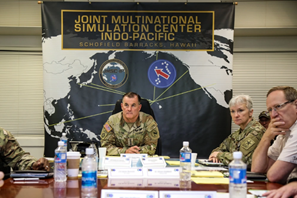
A healthier and more useful example of Blue buy-in can be found with UNIFIED PACIFIC. The outcomes from UNIFIED PACIFIC 23, for example, have been incorporated into USARPAC’s operational campaign—OPERATION PATHWAYS—and into real-world exercises, like the joint U.S.-Australian TALISMAN SABRE 23. Many of the outcomes also were included in the Navy’s GLOBAL game.15
Conclusion. There are many more things I have learned from playing Red in these wargames, and they range across a variety of issues. Simple things, like understanding the military implications of geography, to the very complex, such as what it means to engage in open conflict with a nuclear-armed peer adversary, or understanding how we end wars. Playing in games certainly has made me a better intelligence analyst, as the practical, experiential side of gaming has revealed implications and insights that intelligence reporting alone could never have given me. Most of all, it has driven home for me the necessity to develop a strong working relationship with Blue decisionmakers, operators, and staff officers. These relationships are built on trust, which develops over time. When Red can demonstrate that it is indeed on the same team as Blue, a remarkable kind of learning occurs, and we are able to get to the type of competency required to prevail in global wars against peer competitors.
I have learned that we do not wargame enough, and that we should find ways to incorporate wargaming more deeply across all our various disciplines, and not just in large, Command-sponsored, multiweek games. In addition to the time I have spent supporting these games, I also am an avid hobby wargamer, and I have learned a great deal from playing “for fun.” Namely, I sometimes get to play Blue, which is remarkably fun and interesting to me. When done right, a Red Commander can provide a significant force multiplier to Blue. On his first day as the Commander-in-Chief Pacific, Admiral Chester Nimitz famously met with his staff intelligence chief, then-Lieutenant Commander Edwin Layton, and told him “I want you to be the Admiral Nagumo of my staff. I want your every thought, every instinct as you believe Admiral Nagumo might have them. You are to see the war, their operations, their aims, from the Japanese viewpoint and keep me advised what you are thinking about, what you are doing, and what purpose, what strategy motivates your operations. If you can do this, you will give me the kind of information needed to win the war.”16 If Red is played well in a war game, the Red Commander can hopefully do what Nimitz charged of Layton, but hopefully prior to a disaster of strategic surprise and failure of imagination of the magnitude of Pearl Harbor.
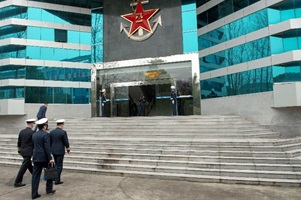
Interestingly, our pacing threat has adopted this very approach. The PLA has enthusiastically adopted wargaming as a means of testing its own ideas about warfare and to help overcome its lack of real-world combat experience. The PLA Navy has led the way in this regard, and it recognizes the need to effectively replicate its adversary—the United States—in these games. To do so, the PLA Navy created the Blue Team Center (in PLA parlance, the Blue Team are the adversaries) at the Naval Command College at Nanjing. The college’s one-time commander, then-RADM Shen Jinlong, who was later promoted and served as the commander of the entire PLA Navy, noted that the PLA Navy’s wargaming faced a major problem—namely, that “Red (China) and Blue (the United States) were like twins. Not only were Blue’s organization, equipment, and combat style the same as Red—they even had the same operational thinking.”17 The Blue Team is designed to rectify this mirror imaging so that PLA Navy wargames are more useful and effective. Indeed, a profile of the Blue Team Director, Gong Jia indicates that his goal is to understand the minds of Blue at the campaign level (operational level in Chinese terminology) and above.18
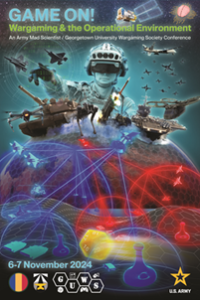 Mr. Sullivan will deliver the TRADOC G-2 Welcome remarks on Day 1 of our Game On! Wargaming in the Operational Environment conference on November 6th in Washington, DC. Army Mad Scientist and the Georgetown University Wargaming Society cordially invite you to dial-in virtually to this event using our Zoom.gov link to explore new wargaming methods, new ways to incorporate learning into Professional Military Education, and listen to the dialogue with wargamers from both inside and outside the military.
Mr. Sullivan will deliver the TRADOC G-2 Welcome remarks on Day 1 of our Game On! Wargaming in the Operational Environment conference on November 6th in Washington, DC. Army Mad Scientist and the Georgetown University Wargaming Society cordially invite you to dial-in virtually to this event using our Zoom.gov link to explore new wargaming methods, new ways to incorporate learning into Professional Military Education, and listen to the dialogue with wargamers from both inside and outside the military.
In the meantime, check out the following Mad Scientist Laboratory wargaming related content:
Hybrid Intelligence: Sustaining Adversary Overmatch and associated podcast, with Dr. Billy Barry and LTC Blair Wilcox
“Best of” Calling All Wargamers Insights (Parts 1 and 2)
Whipping Wargaming into NATO SHAPE and associated podcast, with COL Arnel David
Wargaming: A Company-Grade Perspective, by CPT Spencer D. H. Bates
Taking the Golf Out of Gaming and associated podcast, with Sebastian Bae
Civilian Harm Mitigation and Response (CHMR) Considerations in Wargaming LSCO, Achieving Victory & Ensuring Civilian Safety in Conflict Zones, and associated podcast with Andrew Olson
Brian Train on Wargaming Irregular and Urban Combat
Live from D.C., it’s Fight Night (Parts One and Two) and associated podcasts (Parts One and Two)
Would You Like to Play a Game? Wargaming as a Learning Experience and Key Assumptions Check and “No Option is Excluded” — Using Wargaming to Envision a Chinese Assault on Taiwan, by Ian Sullivan
Using Wargames to Reconceptualize Military Power, by proclaimed Mad Scientist Caroline Duckworth
Gaming the System: How Wargames Shape our Future and associated podcast, with guest panelists Ian Sullivan, Mitchell Land, LTC Peter Soendergaard, Jennifer McArdle, Becca Wasser, Dr. Stacie Pettyjohn, Sebastian Bae, Dan Mahoney, and Jeff Hodges
The Storm After the Flood virtual wargame scenario, video, notes, and Lessons Learned presentation and video, presented by proclaimed Mad Scientists Dr. Gary Ackerman and Doug Clifford, The Center for Advanced Red Teaming, University at Albany, SUNY
Gamers Building the Future Force and associated podcast
Disclaimer: The views expressed in this blog post do not necessarily reflect those of the U.S. Department of Defense, Department of the Army, Army Futures Command (AFC), or Training and Doctrine Command (TRADOC).
1 U.S. Army Training and Doctrine Command, “The Operational environment 2024-2034: Large-Scale Combat Operations,” 1 August 2024, 31.
2 U.S. Army Pacific, “Unified Pacific Wargame Series 2022,” September 2022, 4.
3 Government Accounting Office, “Defense Analysis: Additional Actions Could Enhance DOD’s Wargaming Efforts,” GAO-23-105351, April 2023; https://www.gao.gov/assets/d23105351.pdf.
4 Marc Ambinder, The Brink: President Reagan and the Nuclear War Scare of 1982, (New York: Simon and Schuster, 2018), 82-89.
5 Ian M. Sullivan, “Three Dates, Three Windows, and All of DOTMLPF-P: How the People’s Liberation Army Poses an All-of-Army Challenge”, Military Review, January-February 2024.
6 Robert P. Haffa Jr. and James H. Patton Jr., “Wargames, Winning and Losing,” Parameters, Volume 31, Number 1, Spring 2001; https://press.armywarcollege.edu/cgi/viewcontent.cgi?article+2022&context+parameters.
7 Chad Buckel, “A New Look at Operational Art: How We View War Dictates How We Fight It,” Joint Forces Quarterly, Number 100, 17 February 2021; https://ndupress.ndu.edu/Media/News/News-Article-View/Article/249820/a-new-look-at-operational-art-how-we-view-war-dictates-how-we-fight-it/
8 Wilson Blythe, “A History of Operational Art, Military Review, November-December 2018; https://www.armyupress.army.mil/Journals/Military-Review/English-Edition-Archives/November-December-2018/Blythe-Operational-Art/
9 U.S. Army Pacific, “Unified Pacific Wargame Series 2023: Unclassified Overview,” September 2023, 8.
10 Jim Storr, Battlegroup! The Lessons of the Unfought Battles of the Cold War, (Warwick: Helion and Company, 2021), 74-75.
11 John C. McManus, Fire and Fortitude: The U.S. Army in the Pacific War, 1941-1943, (New York: Caliber, 2019), 63-64.
12 Micah Zenko, Red Team: How to Succeed by Thinking Like the Enemy, (New York: Basic Books, 2015), 2-5.
13 Zenko, “Millenium Challenge: The Real Story of a Corrupted Military Exercise and Its Legacy”, War on the Rocks, 5 November 2015; https://warontherocks.com/2015/11/millenium-challenge-the-real-story-of-a-corrupted-military-exercise-and-its-legacy/ ; and Red Team, 52-61.
14 Eri Hotta, Japan 1941: Countdown to Infamy, (New York: Vintage Books, 2014), 164-165.
15 USARPAC, “Unified PACIFIC Wargame Series 2023: Unclassified Overview,” 11.
16 Ian W. Toll, Pacific Crucible: War at Sea in the Pacific, 1941-1942, (New York: Norton, 2012), 307; Rielage.
17 Ryan D. Martinson, “The PLA Navy’s Blue Team Center Games for War,” Proceedings, Volume 150, May 2024; https://www.usni.org/magazines/proceedings/2024/may/pla-navys-blue-team-center-games-war
18 Ibid.

